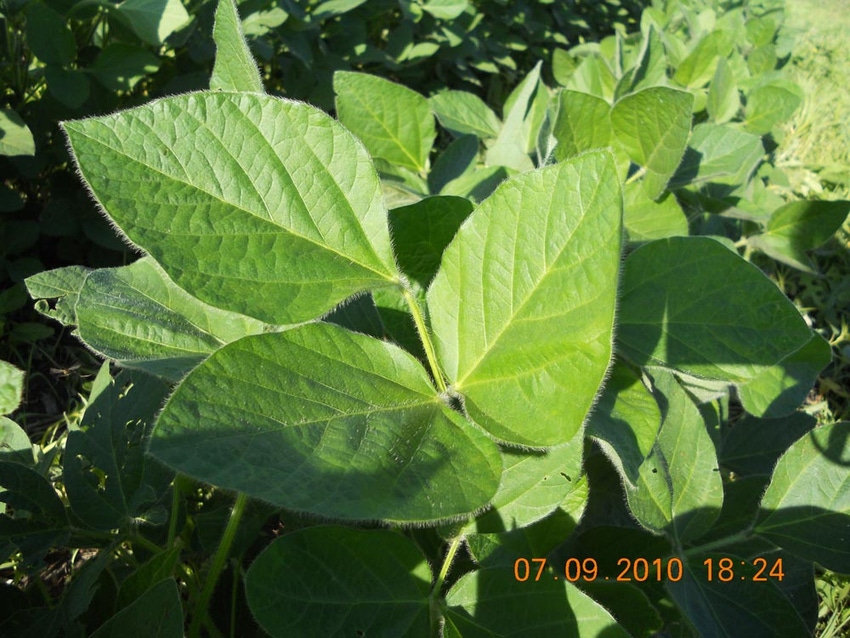August 15, 2011

A number of cases of “yellow” soybeans have been reported in Kansas this year, says Stu Duncan, K-State Research and Extension northeast area crops and soils specialist. There are a number of reasons why soybeans might not have their normal deep green color, he says.
“This year we’ve been seeing more severe ‘yellow flash’ in response to glyphosate applications than in most years,” the K-State agronomist says.
Yellow flashing of soybeans occurs most years, usually where there is overlap or a particularly high rate of glyphosate was applied for some reason, Duncan says.
This year there is an additional factor that is causing more severe and widespread yellow flashing than normal, says Kraig Roozeboom, K-State Research and Extension crop production specialist.
July brought heat stress and in some areas, continued drought stress to Kansas soybeans.
“Stressed beans will flash more readily, and with the stress that soybeans were under by late July, it may be that many fields are flashing even in response to typical rates of glyphosate this year,” Roozeboom says.
“Soybeans usually come out of it quickly, but one of our demonstration plots that received a particularly high rate of glyphosate is still showing yellowing several weeks after the application,” Duncan reports.
It is important to distinguish a case of yellow flash due to glyphosate application from possible nutrient limitations, says Dorivar Ruiz Diaz, K-State Research and Extension nutrient management specialist. Deficiency symptoms that can be similar to yellow flash are iron chlorosis and manganese and possibly other micronutrient deficiencies.
“However, these nutrient deficiencies are more common early in the season and soybeans would normally have grown out of these conditions by this point in the season, except in very severe deficiency situations,” he adds.
Nutrient deficiencies in general will add a level of stress to the plants, which could make potential glyphosate flash symptoms more likely, Ruiz Diaz says.
You May Also Like




